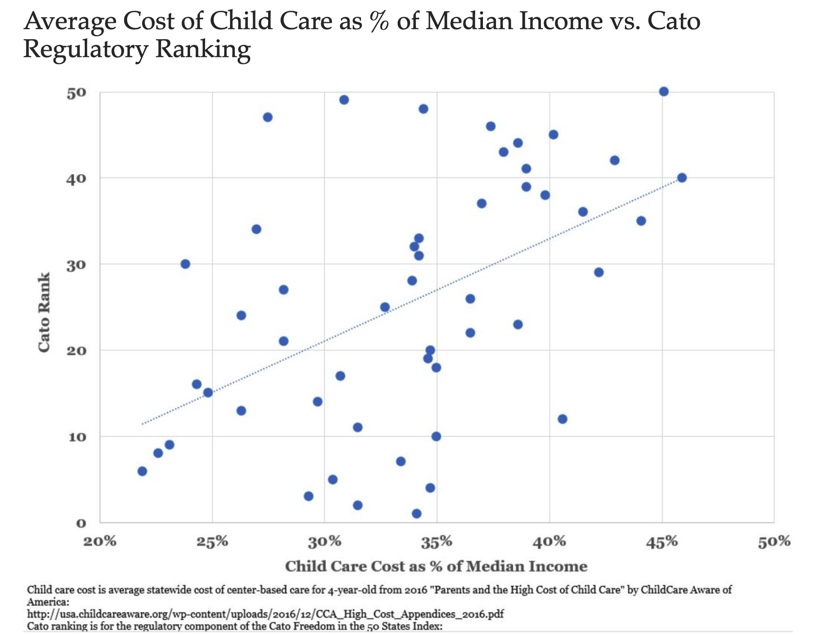Solving Minnesota’s childcare crisis requires regulatory reform
The Department of Employment and Economic Development (DEED) reported that, on Monday, DEED commissioner Steve Grover and Department of Human Services Commissioner Jodi Harpstead engaged in a roundtable discussion with the staff of Minnesota Children’s Cabinet as well as childcare advocates and providers in order to find helpful strategies to increase high quality, affordable childcare availability. But yet again the focus of this discussion was about increasing funding.
“We are about 80,000 slots short in the state of Minnesota for child care right now, and it is one of the Governor’s and Lt. Governor’s big goals for their administration to drastically increase the number of slots we have in Minnesota so kids and their families have more access to child care,” said DEED Commissioner Steve Grove. “DEED has made this a big area of focus through our Child Care Economic Development Grant Program and a big part of our ask for this legislative session is more money for that grant program.”
DEED also announced last week that the Small Business Development Centers at DEED will partner with First Children’s Finance to provide statewide assistance to help child care businesses.
This is inline with other recent efforts to expand funding for childcare.
In D.C., the federal American Rescue Plan included $550 million to give Minnesota’s child care challenges a hearty, welcome, one-time boost.
And in St. Paul, lawmakers are considering two bills with $14 million total to help providers stay in business, to want to be in business, and even to open new spaces in shuttered storefronts and elsewhere. The latter marks a business-model shift from individual in-home child care efforts to larger, more efficient, and better equipped child care centers.
Lack of affordable high-quality childcare is a big issue in Minnesota, and more needs to be done for sure. But this huge focus on increasing spending is taking away attention from another big issue grappling our childcare industry– overregulation.
Research has shown extensively that issues that were mostly focused on in this round table like low pay for childcare workers and high childcare costs are a direct result of too much regulation. Forcing providers to spend more money on compliance activities leaves little revenue to be used to pay childcare workers. And the increased costs that come with regulation are always passed down to parents.
Strict staff-to-child care ratios, as well as group sizes, are not only expensive, but they serve little purpose when it comes to quality childcare as research has shown. The same is true for stringent hiring qualifications.

It is high time our leaders realize that Minnesota’s childcare crisis will not go away the more money they throw at it. Our regulatory landscape plays a huge role in determining the supply of childcare slots.